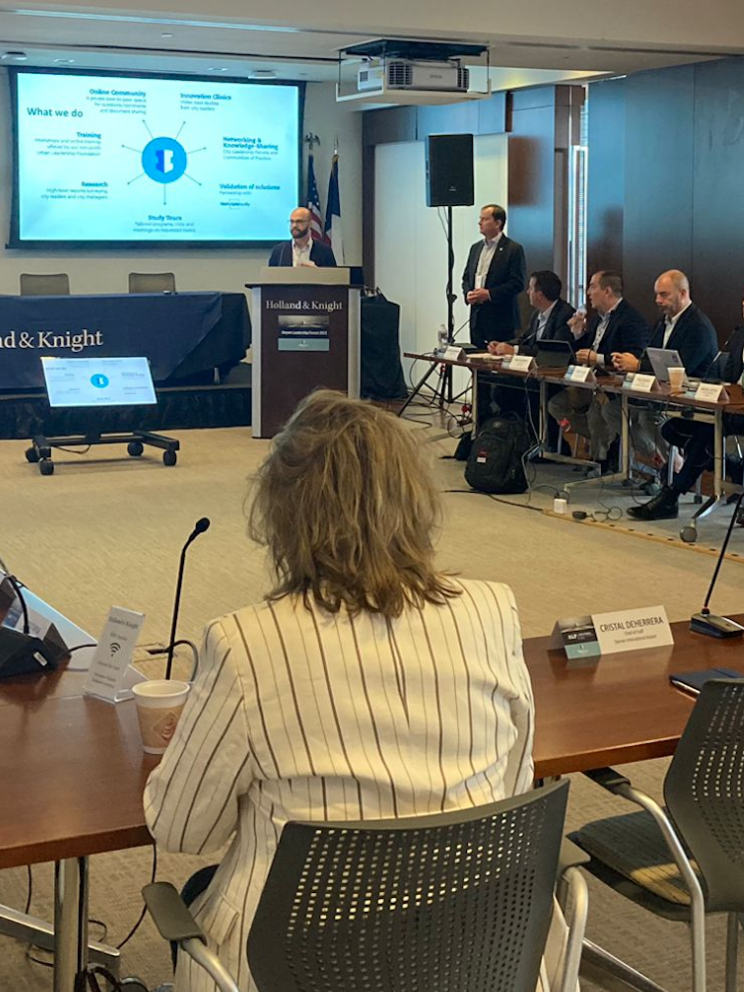
How to become a “two click” city
22 December 2024
by Jonathan Andrews
Government services and information should be available to residents in “two clicks or less”, says a former city official who successfully humanised digital service delivery.
Intashan Chowdhury, the one-time Borough administrator of Prospect Park in New Jersey, was able to streamline access to city information by rolling out keyword search replacement, with a text-based AI powered search.
Across city government there is an expectation for residents to go to a website, find the department, and then reach out to them.
“We are expecting residents and businesses to understand the internal nuances of our organisation,” he told the December CivStart webinar, ‘Humanising Digital Service Delivery’.

“That is not a very customer centric view. Humanising it is about meeting your customers, your residents, your constituents, as we call them in government, and where they’re at.”
“My mother, for instance, can’t understand an ordinance or other municipal jargon, but we were able to introduce our residents to the [new] service, and they were able to get to the information quicker and easier, and it was far more accessible.”
Parth Shah, CEO of Polimorphic, a start-up specialising in AI and machine learning and that worked with Prospect Park through a PPP to achieve the service, echoed these sentiments.
Humanising government services
Drawing on his company’s work with government clients, he explained: “Humanising government services is about understanding that residents don’t differentiate between departments—they see the government as one entity. We can provide a cohesive and user-friendly experience.”
The service has since expanded to include voice AI, and an Ask AI feature in the municipality’s mobile app.
“We were able to democratise access to information,” Chowdhury said. “Despite being a small community, we were one of the most innovative in New Jersey, and we were able to bring the information to the palm of our residents’ hands in ways that they didn’t even imagine.”
The fact a city has done something the same way for 10 years doesn’t mean it has been a great or humanising experience.
“When something new is rolled out people are pouring in positive feedback, because they’re saying, ‘Well, why didn’t it work like this the whole time?’,” Chowdhury said.
He highlighted how creative solutions for smaller municipalities along with PPPs are invaluable.
“We didn’t have an innovation team in Prospect Park, so we partnered with Polimorphic to bring expertise to our projects,” he explained. “They essentially became an extension of our staff.”
A savings rather than a cost
Prospect Park was also able to reduce paper-based processes by 70 percent, consequently freeing up staff to focus on more pressing tasks while residents received faster, more efficient services.
“Good technology isn’t just a cost—it’s an investment in your team,” he said. “If a tool saves even 10 percent of your staff’s time, that’s incredibly valuable, especially when labour costs account for a significant portion of municipal budgets.”
The AI-powered tools have also tracked residents’ interactions, from leaf pick-up requests to chatbot usage.
“This data informed our decision-making and allowed us to improve continuously,” he added. “It even influenced council members’ reports and arguments during meetings.”
Transforming government culture
San Jose in California is the 13th largest city in the US but is run by a council-manager system. That is, the council acts more like a board with the mayor as chair and the city manager the CEO.
“This requires a lot more collaboration and buy-in to get things to happen,” said Smita Bhattacharjee, Deputy Chief Innovation Officer for San Jose. “It’s a culture change. Long-standing employees might resist new methods, especially if they’ve seen ideas come and go with different administrations.”
Many long-term city employees carry extensive institutional knowledge but this can often breed the thinking, ‘if it’s not broken, don’t fix it.’
“Our team’s job is to increase our capacity on the city manager’s side, and that can be as simple as adding some data science fellows from Stanford [University] into a team to really help them step back and explore a problem. That itself can help them rearrange the way they’re doing a certain process to participate.”
Chowdhury noted how AI and the new technology is supplementing many things that city employees do.
“A lot of people are hesitant to use it, because they think that artificial intelligence and humanising service delivery can make them lose their jobs,” he said. “But they realise that they’re actually more efficient, and actually they’re doing their jobs better because they’re using these tools.”
Image: Lesia Sementsova | Dreamstime.com









